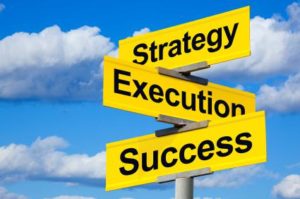Be a Disciple of Discipline
When the going gets tough, the tough get going. But when it comes to leadership, “tough” typically translates to “disciplined,” as in staying the course, even when the waters get inevitably rocky in the implementation stage of any idea, strategy or goal.
No surprise, a recent, random MAP survey found that:70% of CEOs felt that their strategies were the right ones, but only 10% of those CEOs believed the strategies were being implemented correctly.Why?Challenged with change, they’re simply backing down or shifting directions when things get hard.The moral: Become a Disciple of Discipline. Be tough but, importantly, stay true to the course, and your goals can eventually be achieved.
Lee Froschheiser of MAP’s senior consulting team, has personally coached clients on how to stay the course. What’s tricky is that leaders commonly set goals but do so in too many directions, he says. It’s then hard for them to execute any one strategy well because they’re unfocused, spread too thin, or just too busy jumping from strategy to strategy in the hopes that some new “flavor of the month” will give them results.“They’re looking for the ‘silver bullet,’ but what they need is the courage and conviction to stay disciplined in executing some core fundamentals,” he says. “This means holding the course throughout four phases that a company must experience to achieve sustainable success.”The Four Phases include:1. The “How” Phase
When resistance peaks because everyone is focused on new implementation and the mechanics of doing the requested changes, procedures, policies or responsibilities without seeing immediate results. Strategies often fail in this phase because people get frustrated, lack project management skills, and struggle with focus, among other reasons.2. The “Why” Phase
Where everyone suddenly experiences enlightenment, finally tasting the fruits of their labor or experiencing the benefits of whatever is being executed. It’s the big, nearly revolutionary “Ah-ha!” moment in the organization, and employees are surprised and pleased to finally “see” results and rewards.3. The “Who” Phase
When the strategy has become ingrained or internalized within workplace culture. Everyone is passionate, motivated and accountable because now they deeply understand how their work relates to the greater good of both the company and themselves. Teamwork runs smoothly.4. The “External” Phase
When you’re able to apply fundamental strategies to other business partners, vendors, etc., and these tactics actually work. Outsiders experience and recognize the positive results as part of your “brand,” particularly as these strategies are applied successfully to them.While these phases are key, remember: At the core of these phases and what really steers positive, productive outcomes is a Disciple of Discipline. A leader who stays the course and is committed to fundamental business practices is critical to moving an organization through these four phases — and managing it all with purposeful grace.What is the main reason why company strategies fail?



